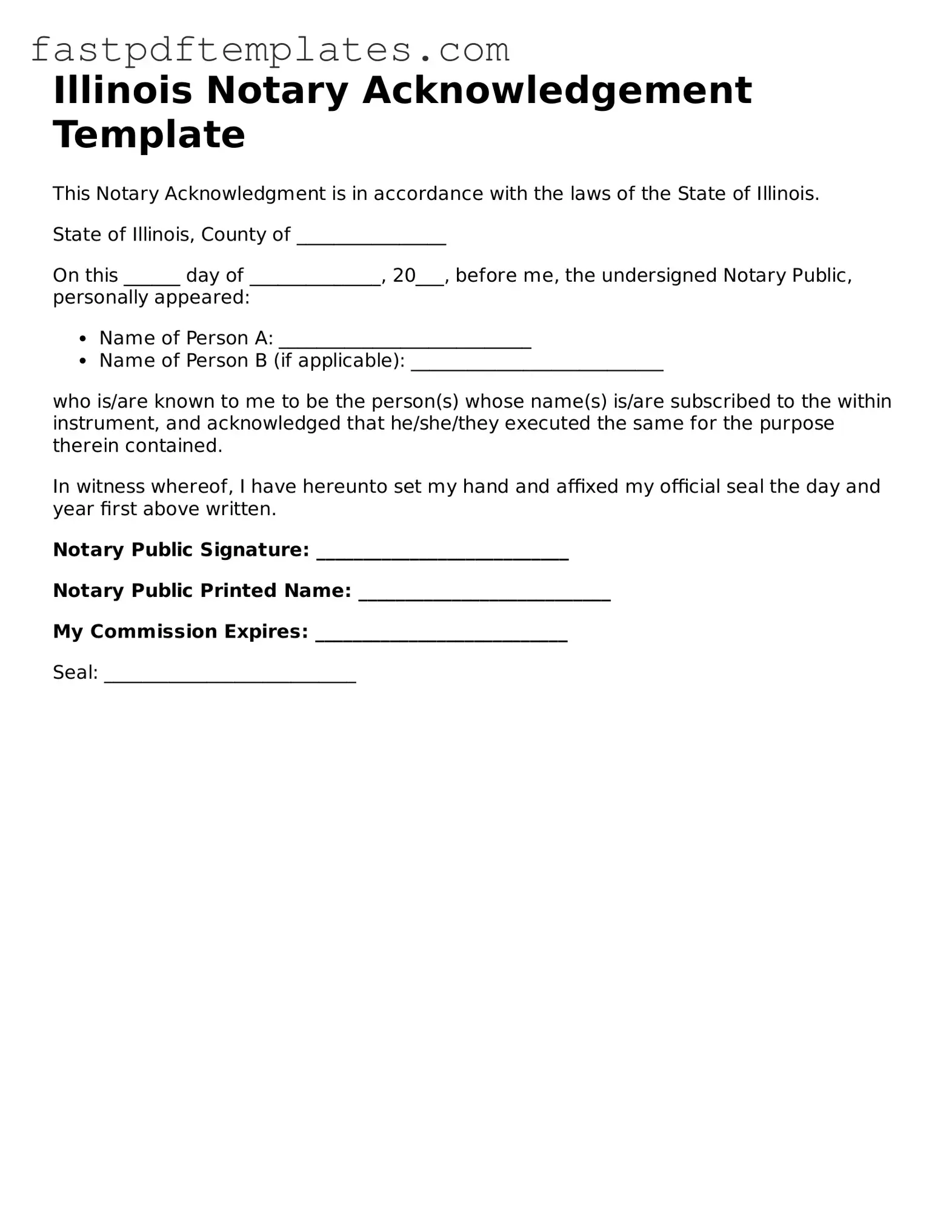Attorney-Approved Illinois Notary Acknowledgement Document
The Illinois Notary Acknowledgment form serves as a legal document that verifies the identity of the signer and confirms their willingness to sign a particular document. This form is essential for ensuring that signatures are authentic and that the signers are acting voluntarily. Understanding its components and requirements is crucial for anyone involved in legal transactions in Illinois.
Access Document
